
Apple made a big, polarizing splash when it announced its new wireless AirPods during last week’s iPhone 7 keynote. The AirPods, which are completely devoid of any wires, were met with plenty of mixed reactions online. Whether or not you agree with the design of the AirPods is one thing, but the new W1 wireless chip, Apple’s first, is promising to bring a better overall wireless audio experience to the masses.
Unfortunately, the AirPods don’t ship until late October, so unless you’re among the few who received early review units, you’ll have to wait until the fall before you can experience the $159 wireless earphones for yourself. That said, you can still take Apple’s new wireless W1 chip for a spin, arguably the most important component of its AirPods, anyway.
The W1 wireless chip is not only embedded in Apple’s AirPods, you’ll find the same chip tucked away in several pairs of new Beats-branded headphones as well. The just-released Beats Solo3 On-Ear Wireless Headphones, for instance, have the distinction of being the first product to hit the market with a W1 chip nestled inside. As such, we felt that it was only right to provide you with a hands-on look at this compelling new wireless headphone option.
“Up until now, no one has taken on the challenge to really deliver the audio experience wirelessly between your mobile device and your headphones in a way that takes advantage of the opportunities to do something new and do something great,” notes Apple’s SVP of Worldwide Marketing, Phil Schiller. “And up until now, no one has taken on the challenge of fixing the things that are difficult to do in those wireless experiences, and made it easy so that we all want to enjoy them.”
Speaking of the W1 chip, Apple’s Chief Design Officer, Jony Ive, notes: “It is the first of its kind to produce intelligent, high efficiency playback while delivering a consistent, reliable connection … The W1 chip enables intelligent connection to all your Apple devices, and allows you to instantly switch between whichever one you’re using.”
Of course, both Ive and Schiller were speaking in the context of AirPods, but the chip-speak should apply to any device that features a W1, such as the Beats Solo3 Wireless On-Ear Headphones. Watch our unboxing and pairing video below for a hands-on look at the W1 chip in action. To skip right to the pairing process, click here.
Video walkthrough
Subscribe to the 9to5Mac YouTube channel for more hands-on videos
Interestingly, there is nary a mention of the new W1 chip, iOS 10 compatibility, or anything else that would separate these headphones from others on the shelf, mentioned on the Beats Solo3’s packaging. The 40 hours of wireless battery life, a significant jump over the 12 hours of battery available in the Beats Solo2, is the one thing that might clue a casual onlooker in on the fact that something’s different. That, and the ability to quickly charge the headphones using the Fast Fuel option, which lends 3 hours of playback for just a 5-minute charge.
Pairing
It’s in the headphone’s instruction manual that the differences are finally addressed. Although the moniker “W1” is never mentioned anywhere throughout the materials, users are provided with updated pairing process instructions for iOS 10:
Step 1: Turn on Bluetooth via Control Center.
Step 2: Press the power button on the Beats Solo3 for 1 second, hold the headphones near an unlocked iPhone, and follow the onscreen instructions.
Step 3: Start listening.

The pairing process is just as simple as Apple demonstrated during the iPhone 7 event
It’s a much-welcomed departure from what can oftentimes be a painful Bluetooth pairing process. For the record, Bluetooth is still being used, it’s just that Apple has dipped the protocol in its own secret sauce to make the pairing process much more palatable.
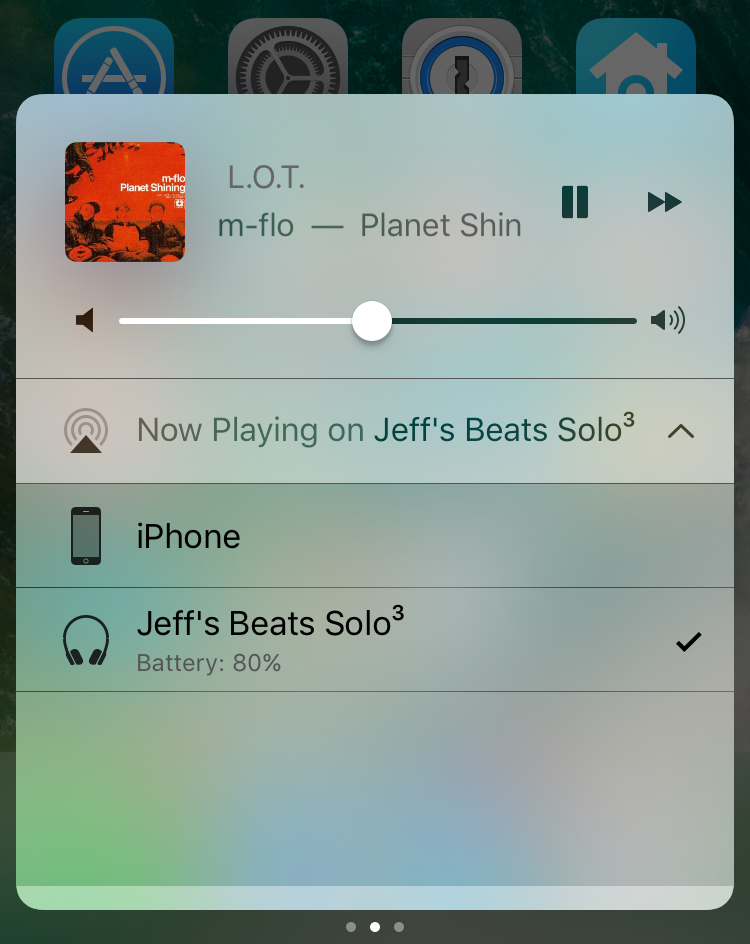
Audio output options on iPhone
Like the AirPods, the Beats Solo3 can be simultaneously connected to your iPhone and Apple Watch, providing instant switching between devices. For other devices like iPads and Macs running macOS Sierra, it’s as simple as selecting the Beats Solo3 as an output source.

The W1 chip affords simultaneous Apple Watch and iPhone connectivity
The great thing about the new pairing process afforded by the W1 chip is its iCloud integration. Once you pair your headphones with one device, the pairing information propagates across all iCloud-enabled devices running the latest Apple software.

Audio output options on iPad Pro
This means that you can just open Control Center on your iOS 10-enabled iPad, or macOS Sierra-enabled Mac, and the Beats Solo3 headphones will appear as an audio output option. In that regard the process is a bit, as Apple often likes to exclaim, magical.
The thing to remember is that, as long as you are signed in to iCloud with the same Apple ID across all devices, you’ll only need to pair your set of Beats Solo3 headphones once, and as shown above, even that initial pairing process is painless.
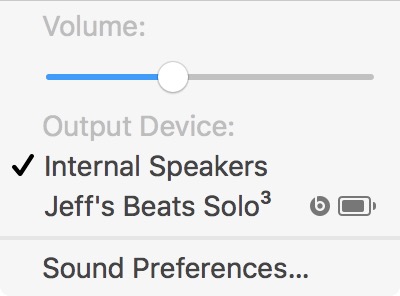
There’s a reason why Apple made it easier to choose audio output on macOS Sierra
Both iOS 10 and macOS Sierra are designed in a way that makes it easy to switch audio output devices on the fly. A simple swipe up from the bottom of the screen reveals the redesigned Control Center interface in iOS 10, which makes switching output devices easy. In the new iOS 10 Music app, switching output devices is even more simple; audio switching is baked into the Music app’s Now Playing interface.
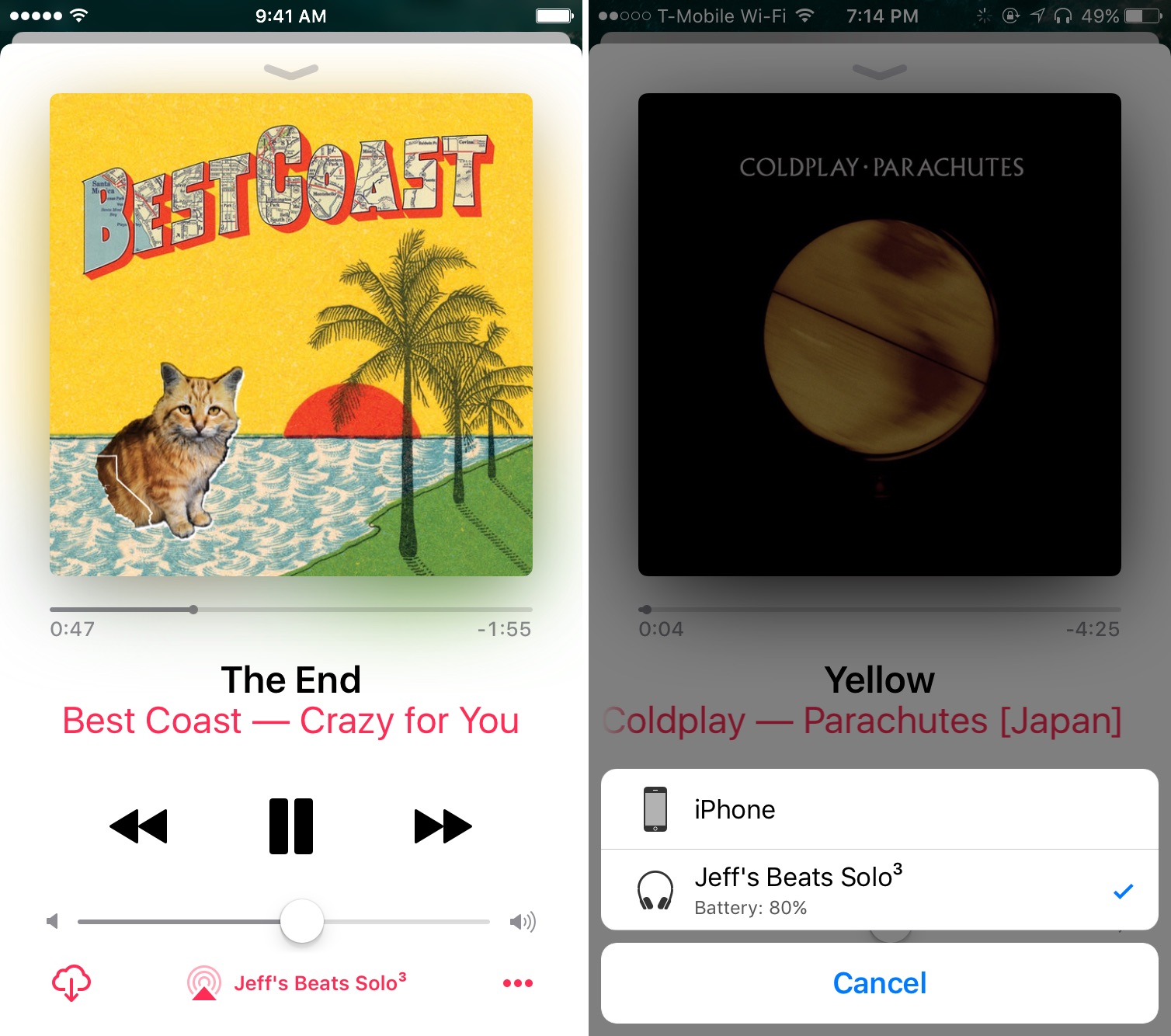
The new Music app interface in iOS 10 makes it easy to switch between sound output devices
If you switch between devices often, you’ll appreciate how easy it is to route music to your headphones without needing to finagle with the device’s Bluetooth settings. You can still pair the Beats Solo3 Wireless Headphones with 4th-gen Apple TVs and non-Apple devices via the traditional Bluetooth pairing process, you just won’t get the benefits afforded by the W1 chip.
Battery life
Along with the ability to select the Beats Solo3 as an output device, you’re also given current battery statistics for the headphones. Jony Ive’s quote included a line about “intelligent high efficiency playback,” and the results are encouraging.
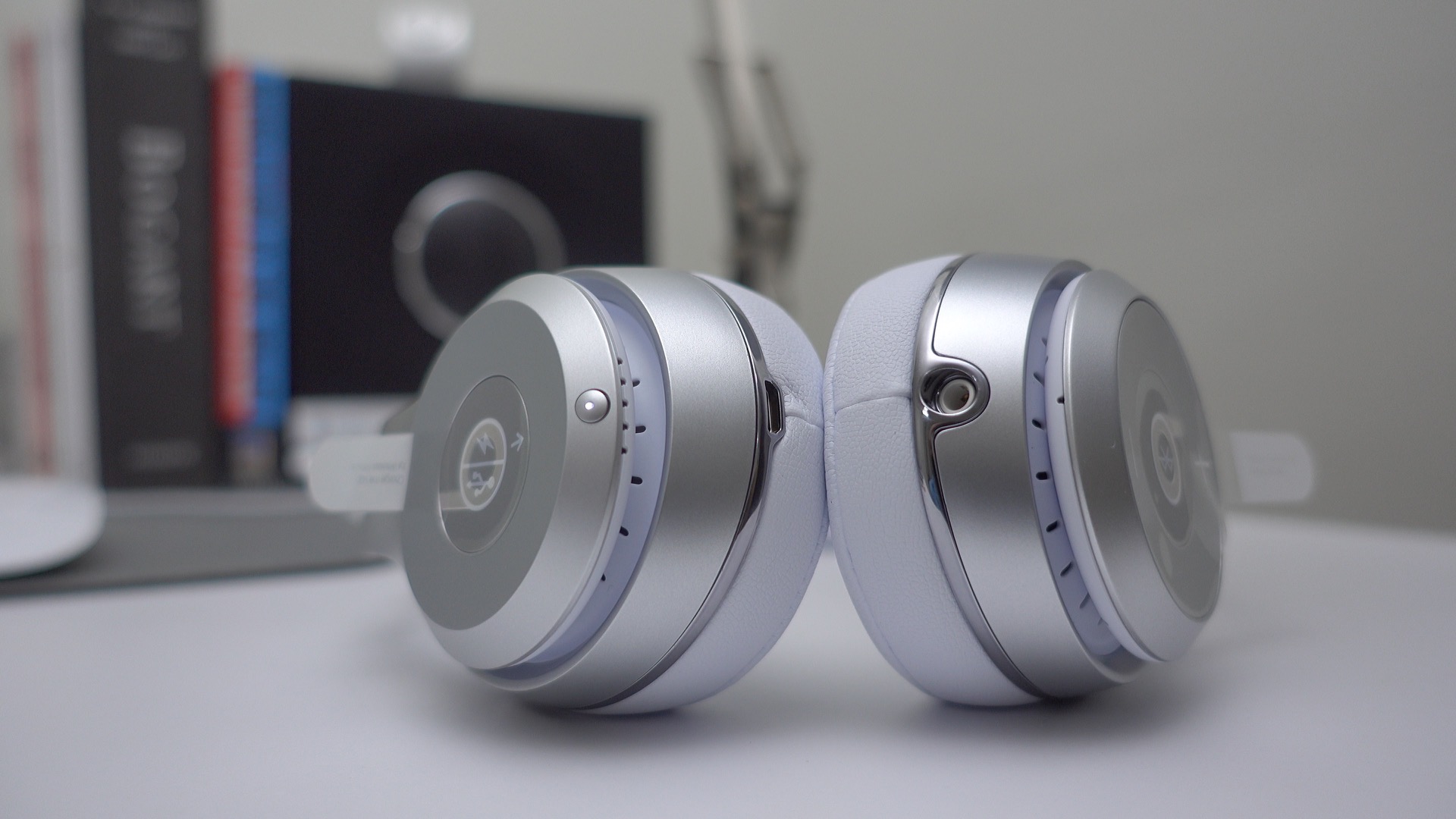
I don’t have battery size specifications, but the Beats Solo3 lasts a whopping 40 hours on a single charge. That’s 28 hours more than the Beats Solo2, which, at 7.8 ounces, weighs only 0.2 ounces less. In other words, while there may be some changes with regard to the battery and other internals, it seems as if the W1 chip has helped in the area of battery life.
Range
I’ve never owned any wireless headphones above the $200 price threshold. I’ve owned a pair of PowerBeats 2 in the past, but never anything above that. Most of the wireless Bluetooth headphones that I’ve owned have been on the low end of the price scale. As such, I usually have issues with connectivity and maintaining a good, strong signal.
The Beats Solo3 is hands-down the best pair of wireless headphones that I’ve ever tested when it comes to range, much in part due to its class 1 radio. I placed my iPhone by the front door inside my house. I then proceeded to exit the back door and walk all the way to the back of the yard, Michael Jackson’s “Wanna be Starting Something” still thumping, and walked right near the fence line. I don’t know the exact distance that was, but I can assure you that it wasn’t nearby.
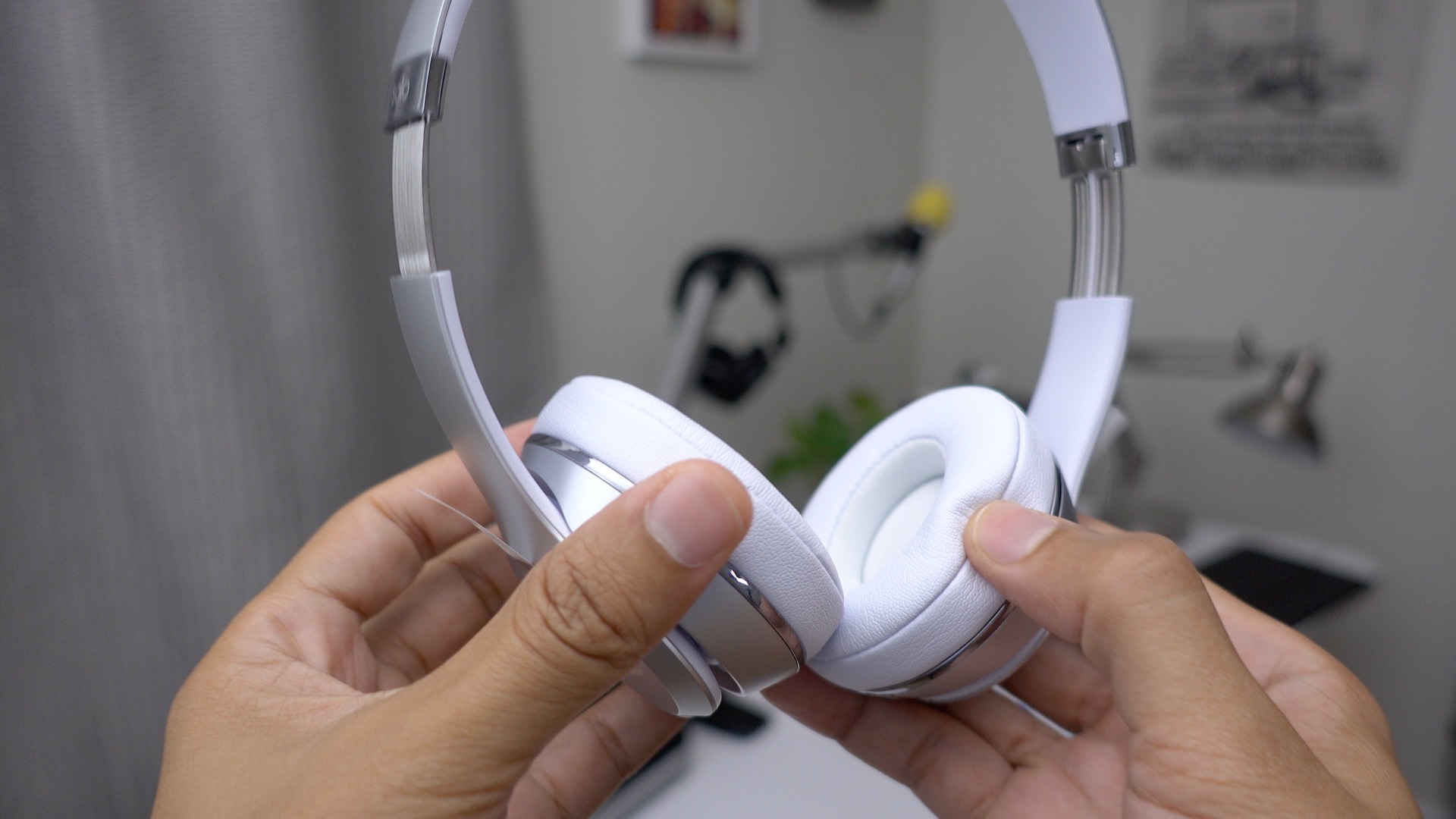
With any other headphones that I’ve owned, the signal would have long departed, probably before I even stepped outside the house. With the Beats Solo3, the signal was still perfect and the music kept playing without even the slightest of interruptions. Super-impressive.
Sound quality and fit
It might seem silly to have sound quality this far down the page, but I’ve learned that sound is a highly subjective matter. What sounds good to me, might not sound as good to you, and vice versa. Therefore, I like to focus on the technical and feature aspects of headphones that I review.
That said, it’s imperative to at least touch on sound quality in order to understand the type of headphones that you’re getting. The Beats Solo3 is a pair of closed back headphones with tiny leather-like plush cups for the ears. The headset won’t, in most cases, enclose your entire ear, but it’s made to rest snuggly — a little too snuggly for my tastes — against the ear.

Sound with these headphones definitely favors low end bass, but it’s nothing like the stereotypical pair of booming bass headphones that Beats made its name off of. Overpowering low end sound is still the brand’s bread and butter, but significant attention to detail has been paid to the mids and highs as well.
In most cases, unless you’re someone who takes audio very seriously, you’ll be happy with the way these sound. The ranges are balanced enough to satisfy the average listener, and aren’t nearly as bass-reliant as Beats headphones have been in the past.
On board controls
You’ll be happy to know that the Beats Solo 3 features on board controls for music playback, volume, and Siri invocation. The left ear cup features all of the needed controls, along with a microphone for sending commands to Siri.
On the opposite ear cup, you’ll find a fuel gauge, which helps denote how much battery life is remaining. The fuel gauge features five small LEDs that display remaining battery life with a quick press of the power button.
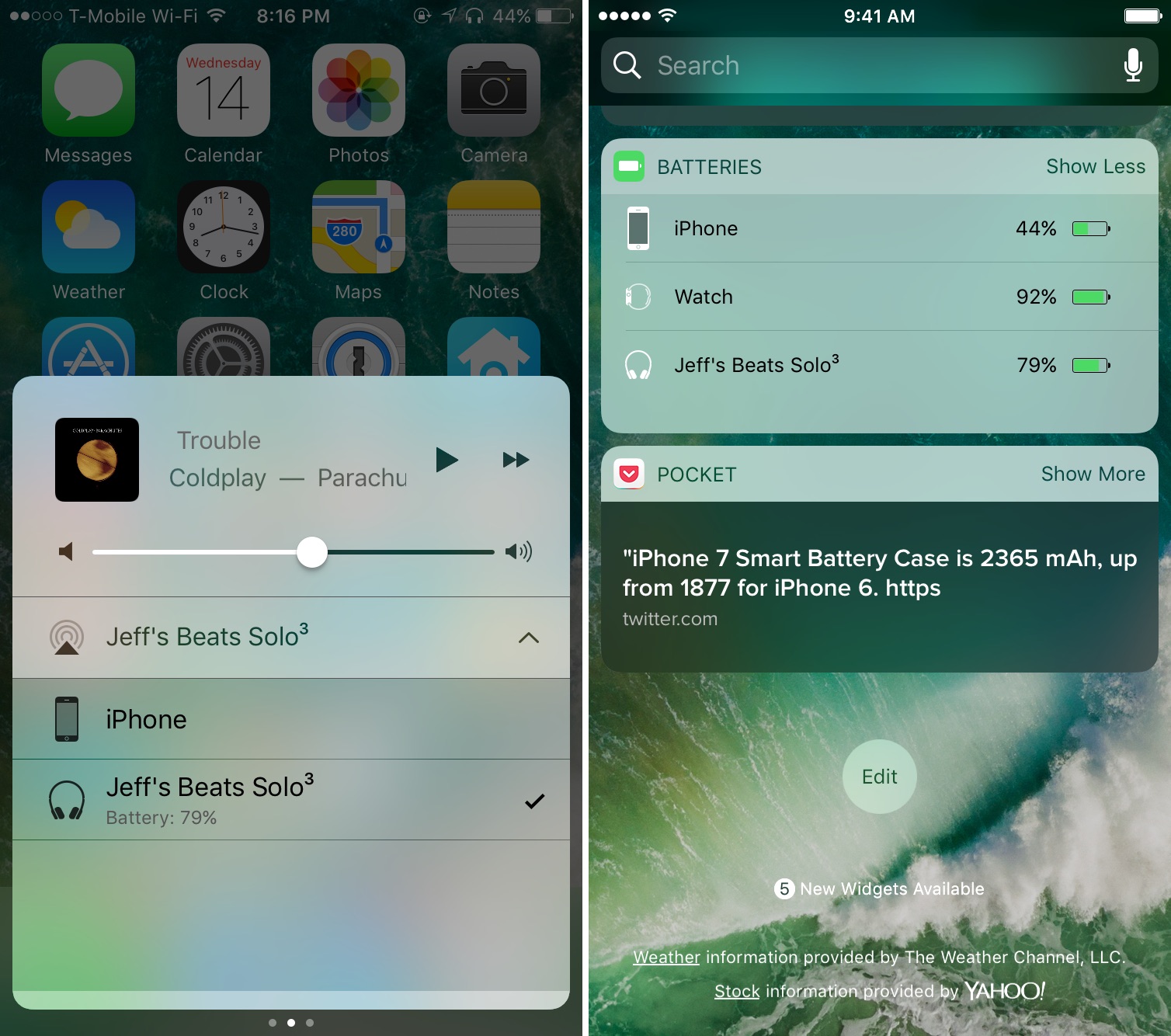
Keep an eye on battery life via Notification Center or by using the Battery widget
Having a fuel gauge is a nice feature, but you’ll get much more accurate battery readings by looking at the remaining battery life in Control Center, or by using the Battery Widget on the Lock screen.
Other points of note
I never intended for this to be an outright review, but it seems to have inadvertently turned into such. With this in mind, I may as well touch on some of the other notable points about these headphones.
Although the headphones are wireless, a RemoteTalk headphone cable with 3.5mm headphone jacks (lol) on both ends is included in the box. This, effectively, allows you to turn your Beats Solo3 Wireless Headphones into a pair of Beats Solo3 Wired Headphones. The RemoteTalk cable even comes with an inline remote for music and phone call management. This is great for those times when you run out of battery life, or for other occasions, such as low latency podcast monitoring (latency is significantly less than most Bluetooth headphones, yet it’s still discernible.)
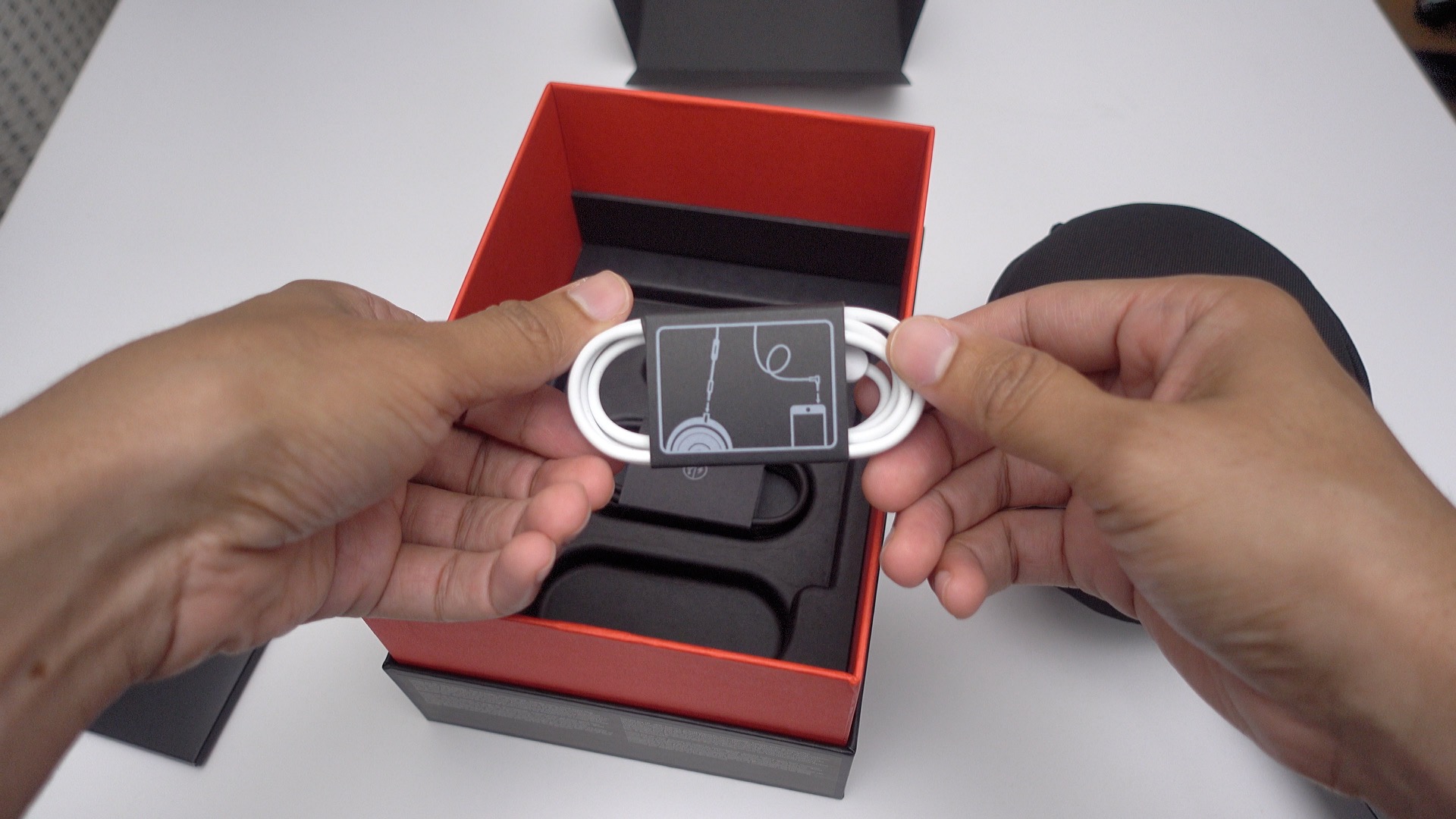
During the time when the RemoteTalk cable is being used, the wireless portion of the headphones shut down to conserve battery life. It’s not a feature that people primarily looking for a wireless experience will use often, but it’s a great feature to have on standby.
Speaking of battery life, the unit’s Fast Fuel feature affords users 3 hours of music playback time for only 5 minutes of charging. For comparison, AirPods need 15 minutes of charging to obtain the same amount of battery life.
One of the major problems that I tend to experience with Bluetooth headphones is that they’re always dead when you need them. With a feature like Fast Fuel, you should never have to worry about being without music, as long as you have five minutes to spare.
Gripes
No Lightning
My biggest gripe with the Beats Solo3 wireless headphones is that it still requires a microUSB cable for charging. I honestly thought I’d seen the last device with microUSB, but I stand corrected. In a world with Lightning and USB Type-C, microUSB seems like a definite step back. Another one of Beats’ W1-powered products, the Beats X Wireless Earphones, ships with Lightning connectivity in tow. Since Beats X is a brand new model to the Beats lineup, it likely made justifying the move to Lightning much easier.
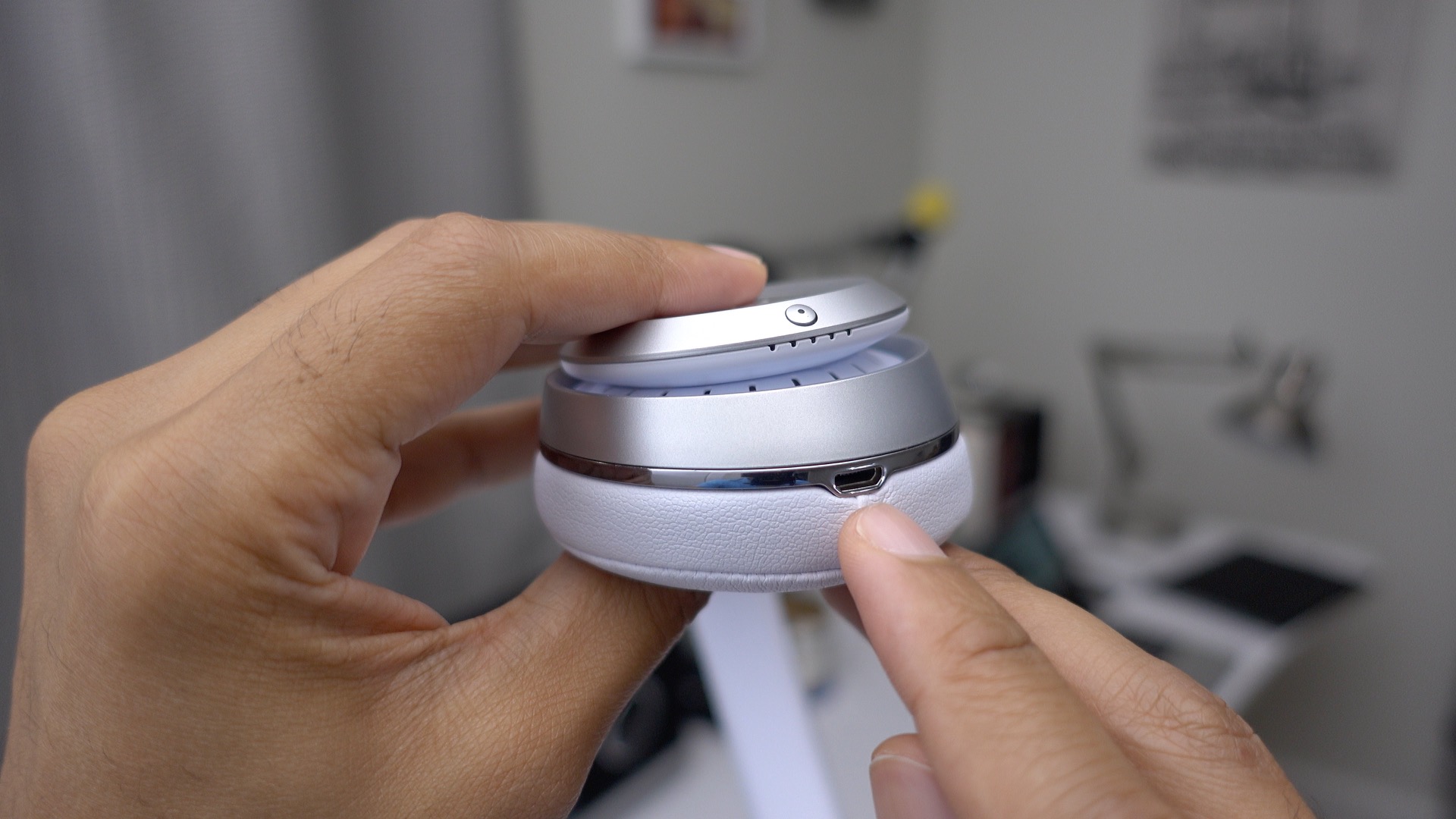
Build quality
For $299, I expect the build quality to be much better. I can’t say for sure how these headphones will hold up over the long term, but the first thing I noticed was the plastic.
There’s lots of plastic here. The headband is plastic, the outer ear cups are plastic. Almost the entire headphone is…plastic. There is a little bit of metal thrown in there, primarily the inner band, but higher quality materials are few and far between.
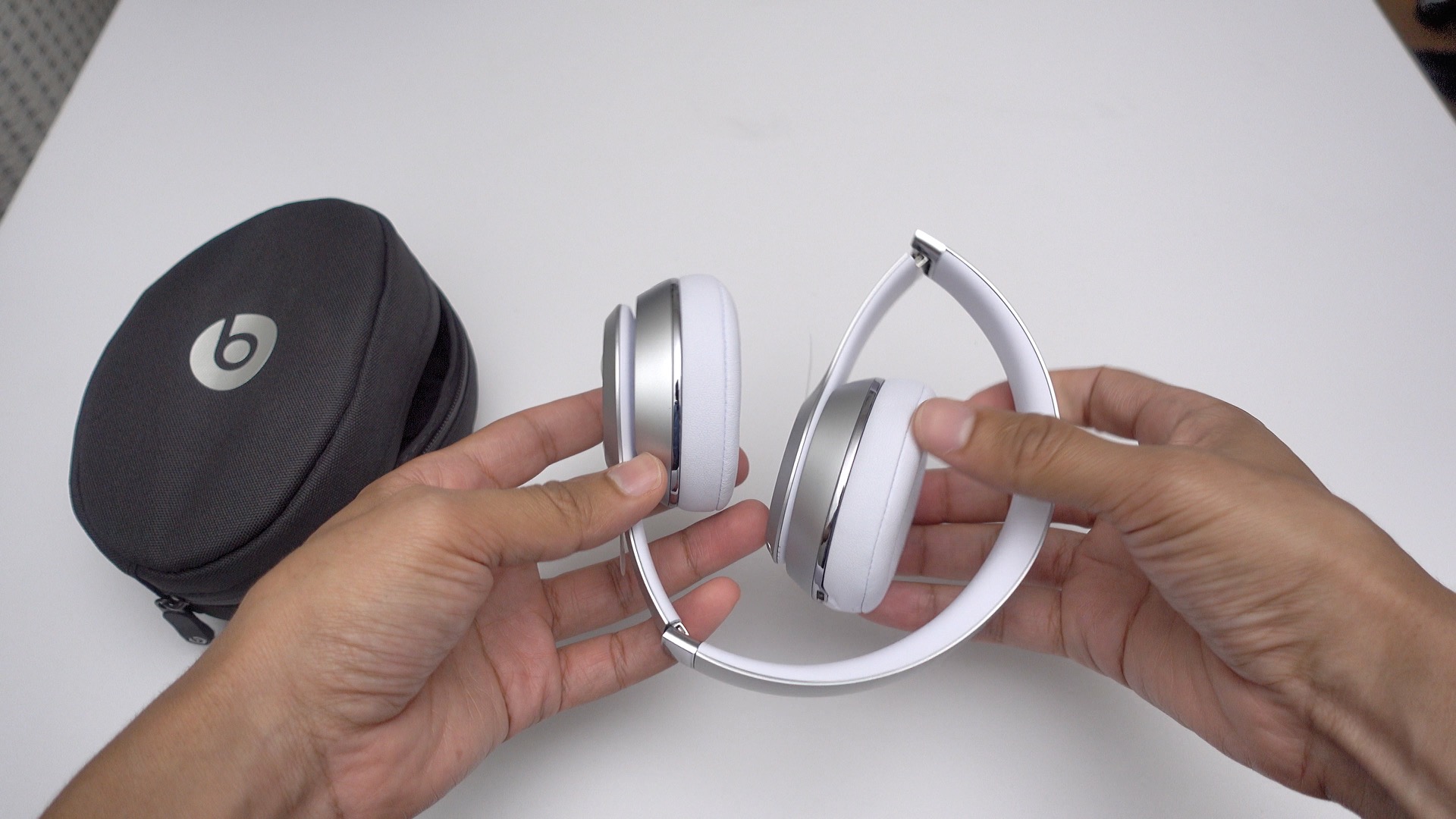
The wire that goes between the two ear pieces, while protected in a recessed area of the inner band, is still exposed. I’ve seen other headphone manufacturers do a better job of hiding the wires, which helps protect from shorts and other potential damaging scenarios.
Beats has a history of producing headphones with suspect build quality, so the initial build of these headphones, while visually appealing, doesn’t instill much confidence in me. It’s too bad, because the Beats Solo3 is solid in virtually every other aspect.
Conclusion
If you can look past the potential build quality issues and the lack of Lightning connectivity, then I think most will be satisfied with the Beats Solo3. It’s $100 more expensive than I think it deserves to be, (you can find Beats Solo2’s for much cheaper) but that’s the price you have to pay to be an early adopter.
If you use Apple devices exclusively, then the inclusion of the new W1 wireless chip makes the Beats Solo3 – available now on Amazon – that much more attractive. Easy pairing and virtually seamless migration between devices makes using these headphones in almost any scenario a breeze.

Then there’s the 40 hours of battery life, 3 hours of battery life from a 5 minute charge, and that glorious long range connectivity. Lastly, the on board music and volume controls, Siri controls, and the ability to use these headphones like normal wired headphones is a definite win.
The Beats Solo3 is a feature-laden product, but it’s not perfect. Not everyone will love the sound quality or the fit, but I think a significant contingent of Apple users will appreciate the overall experience.
FTC: We use income earning auto affiliate links. More.




Comments